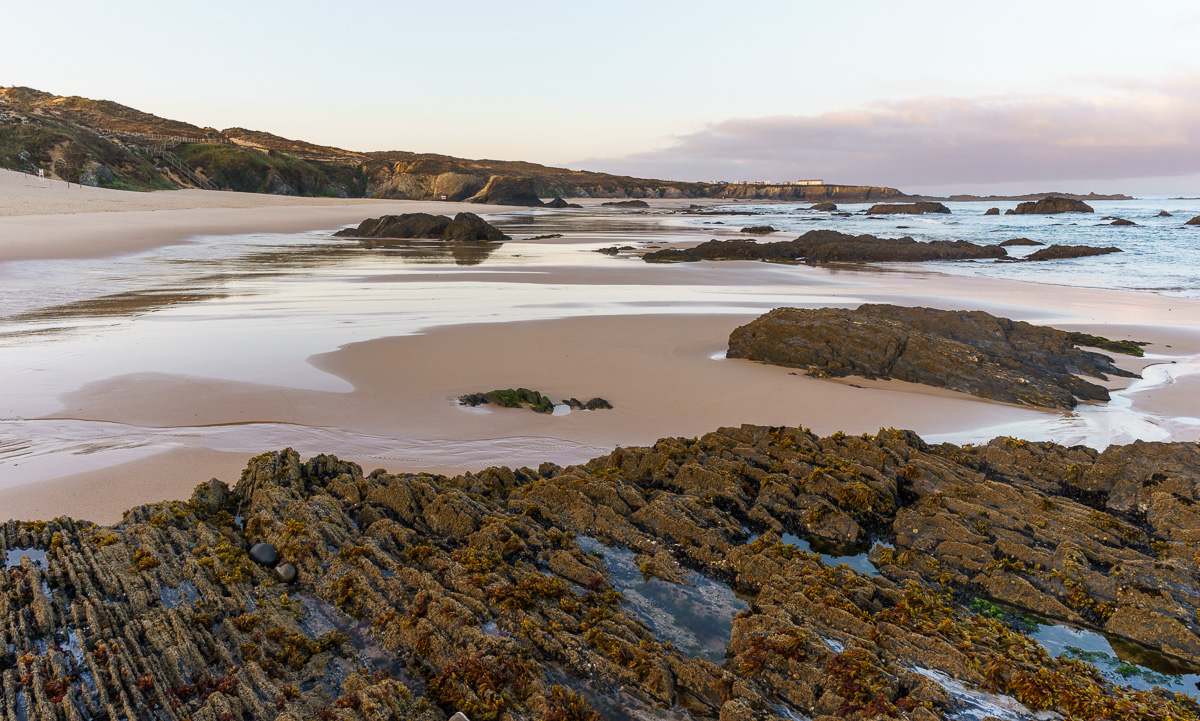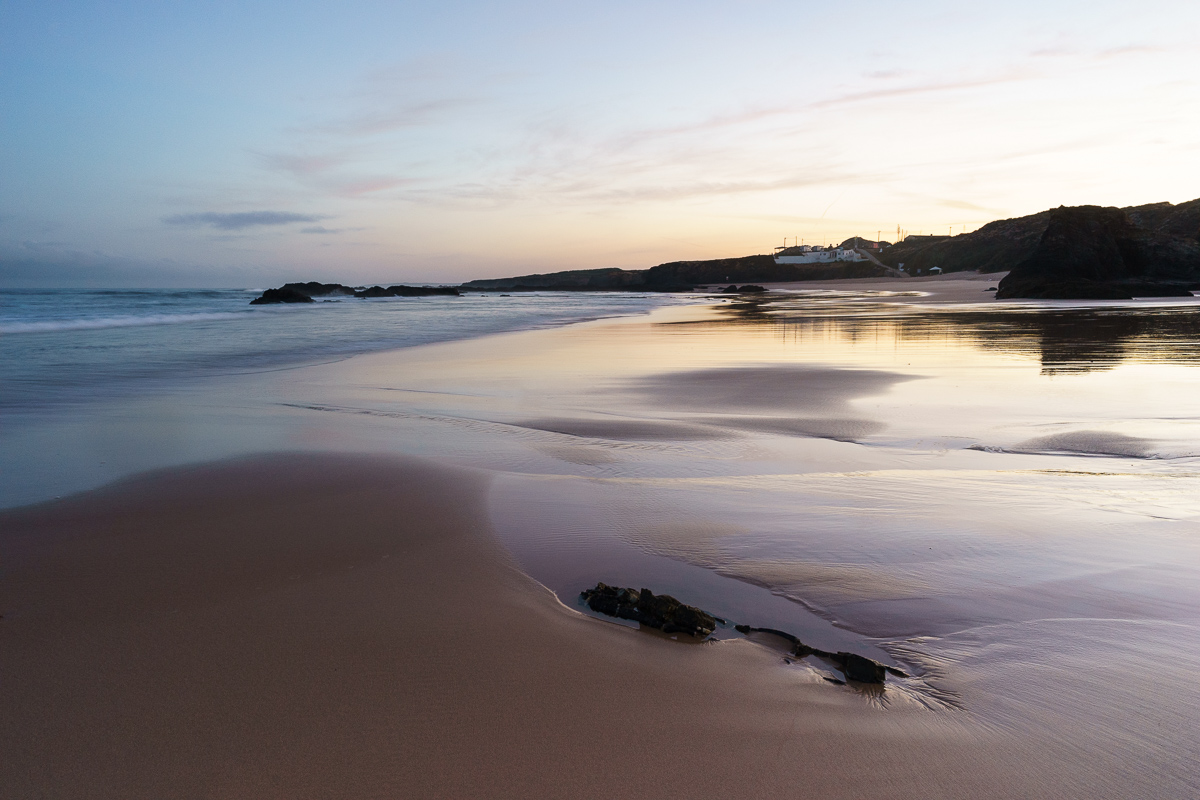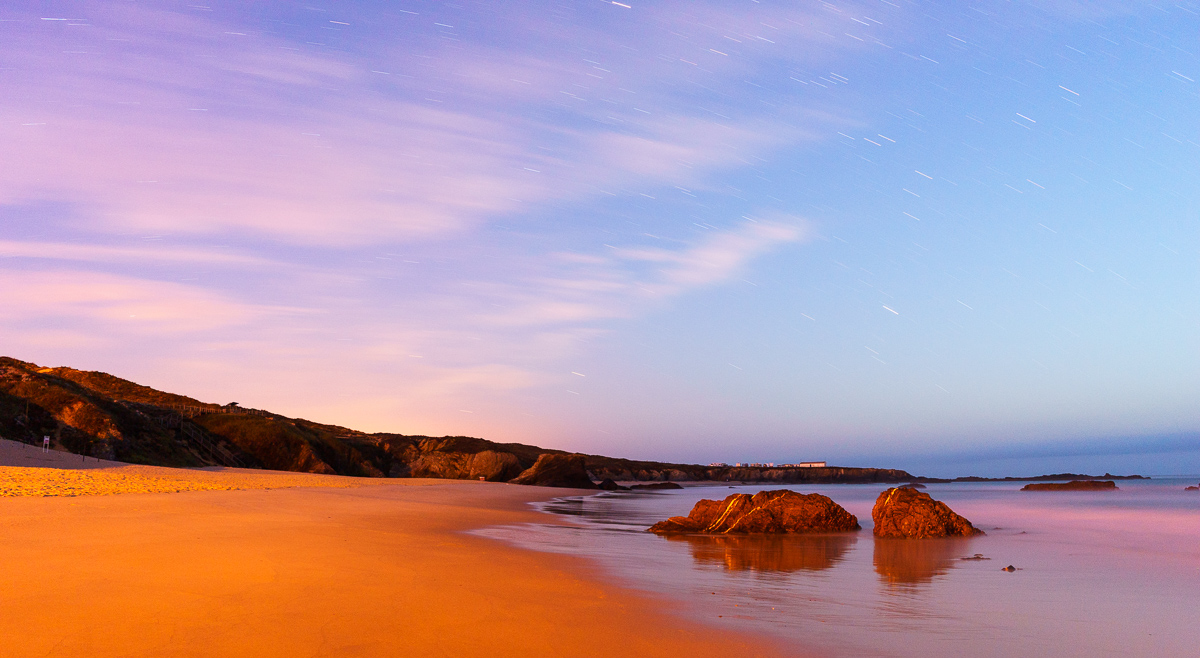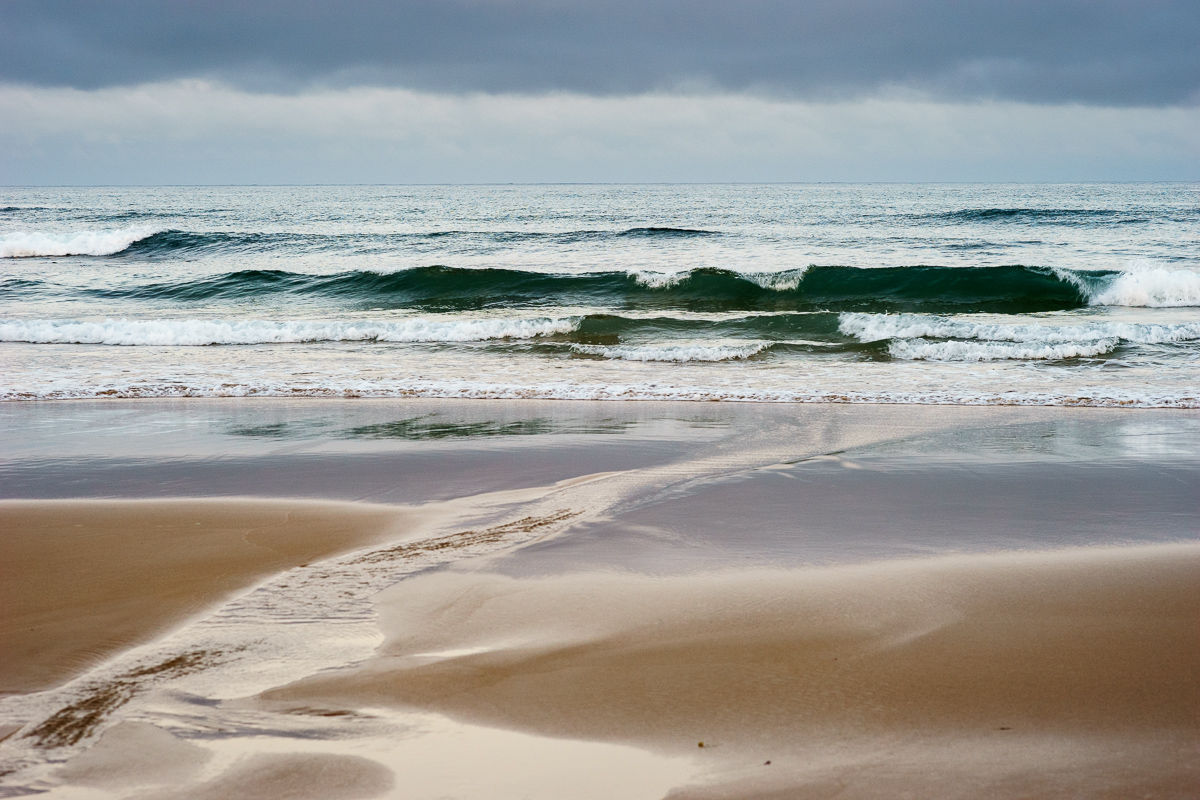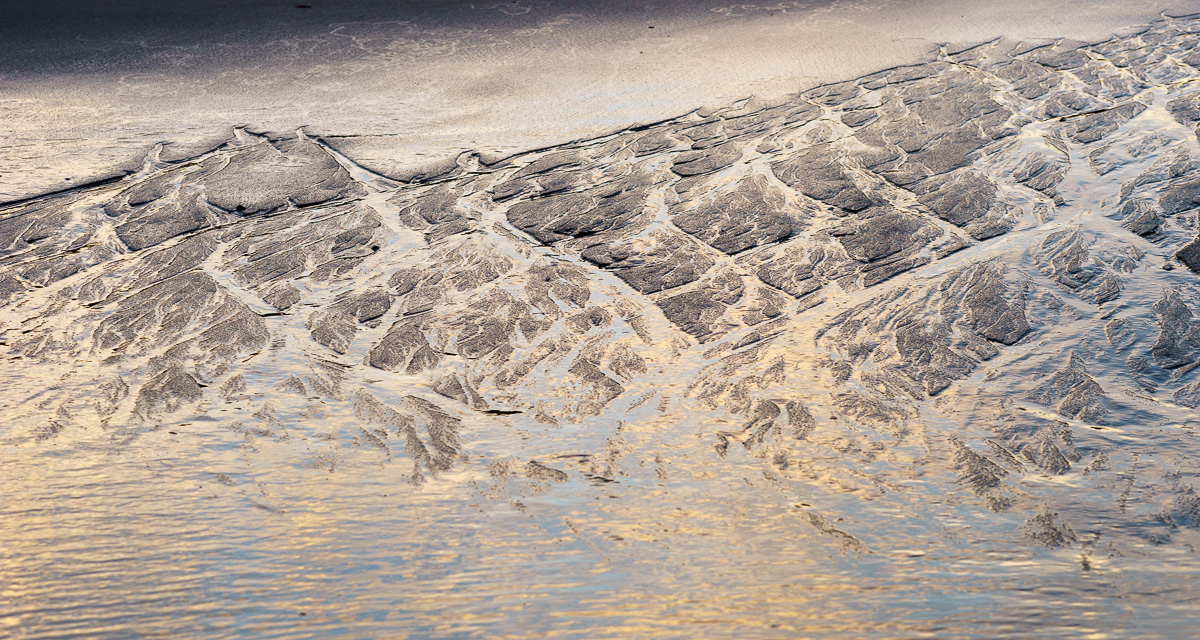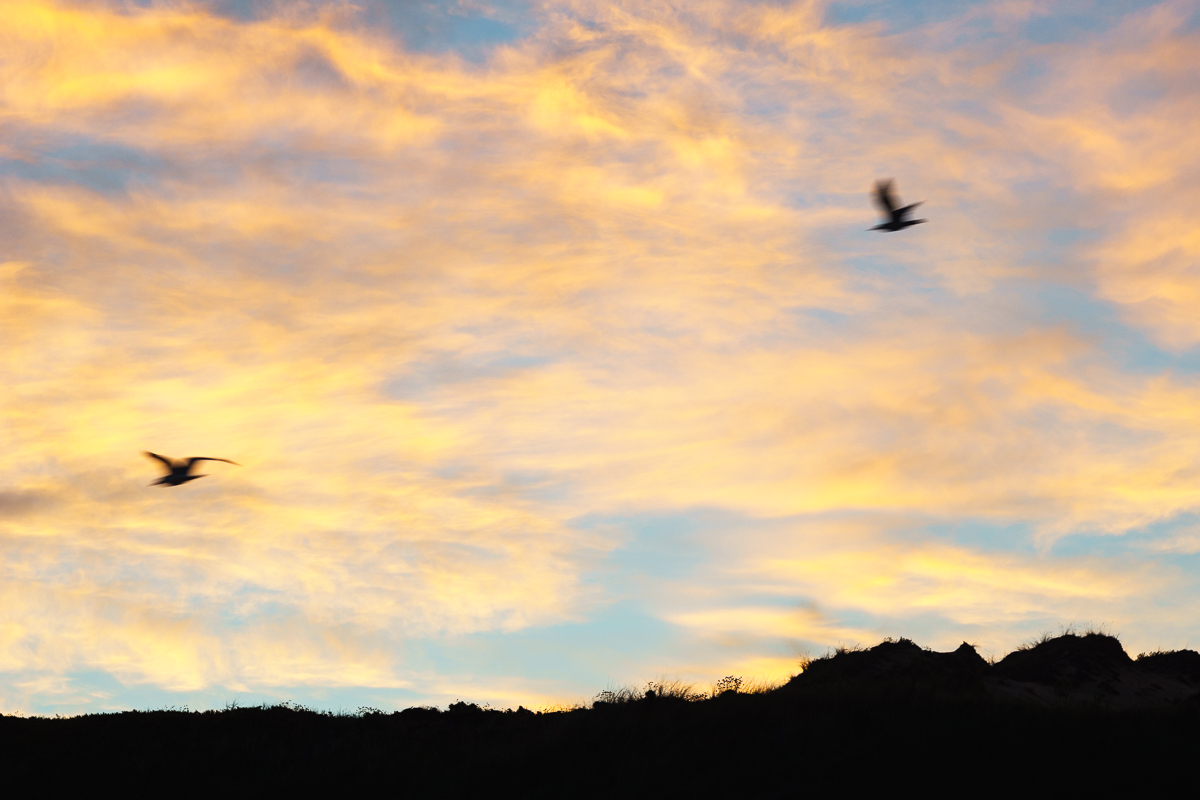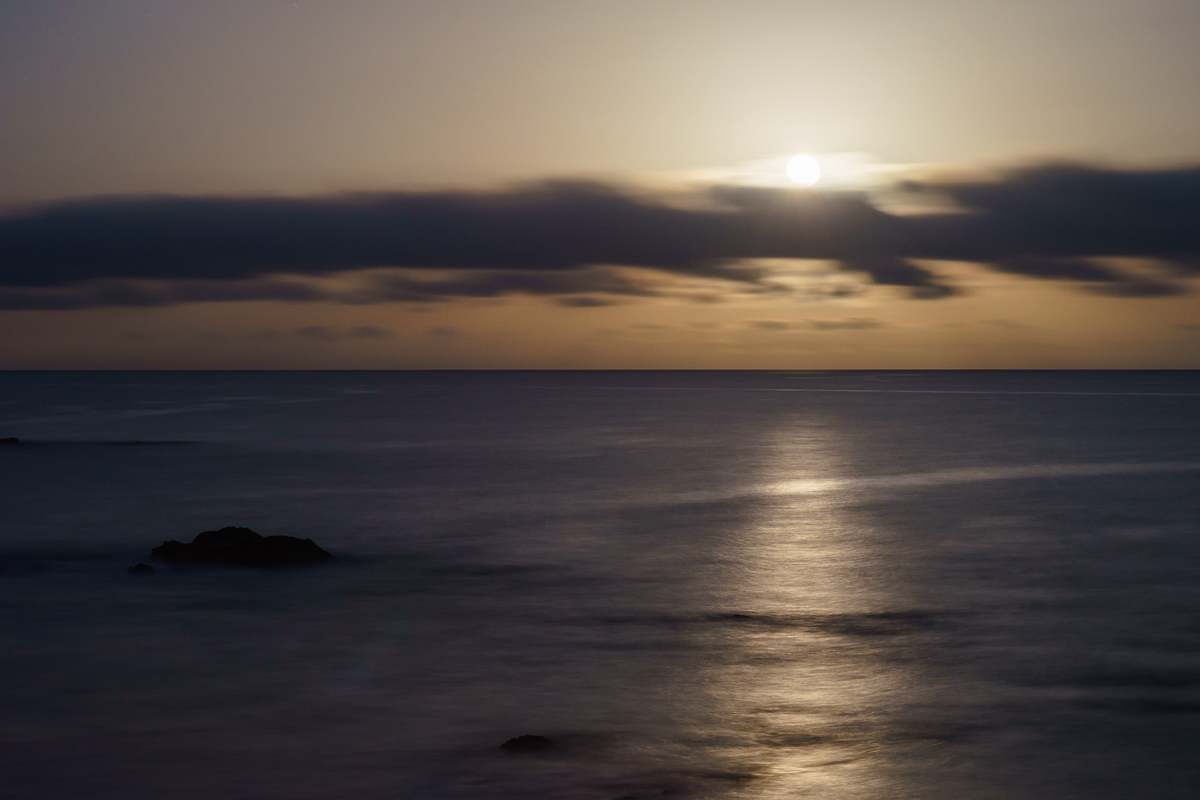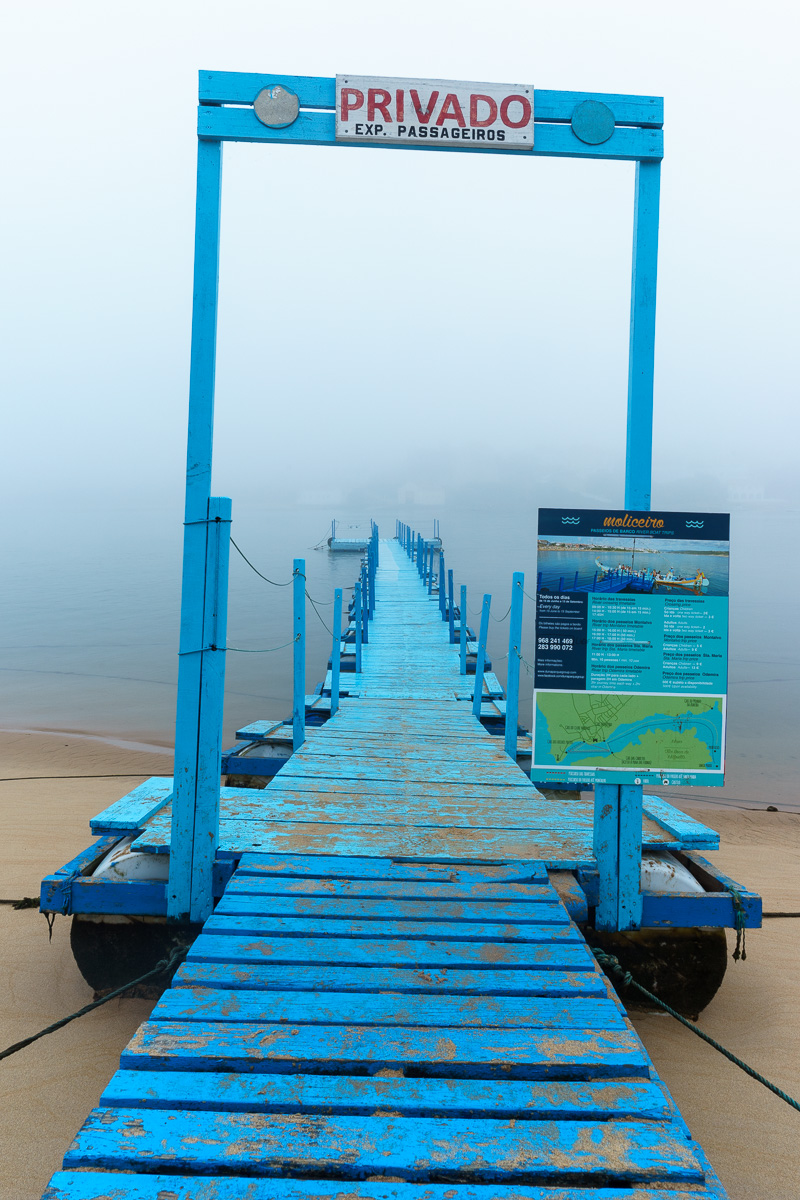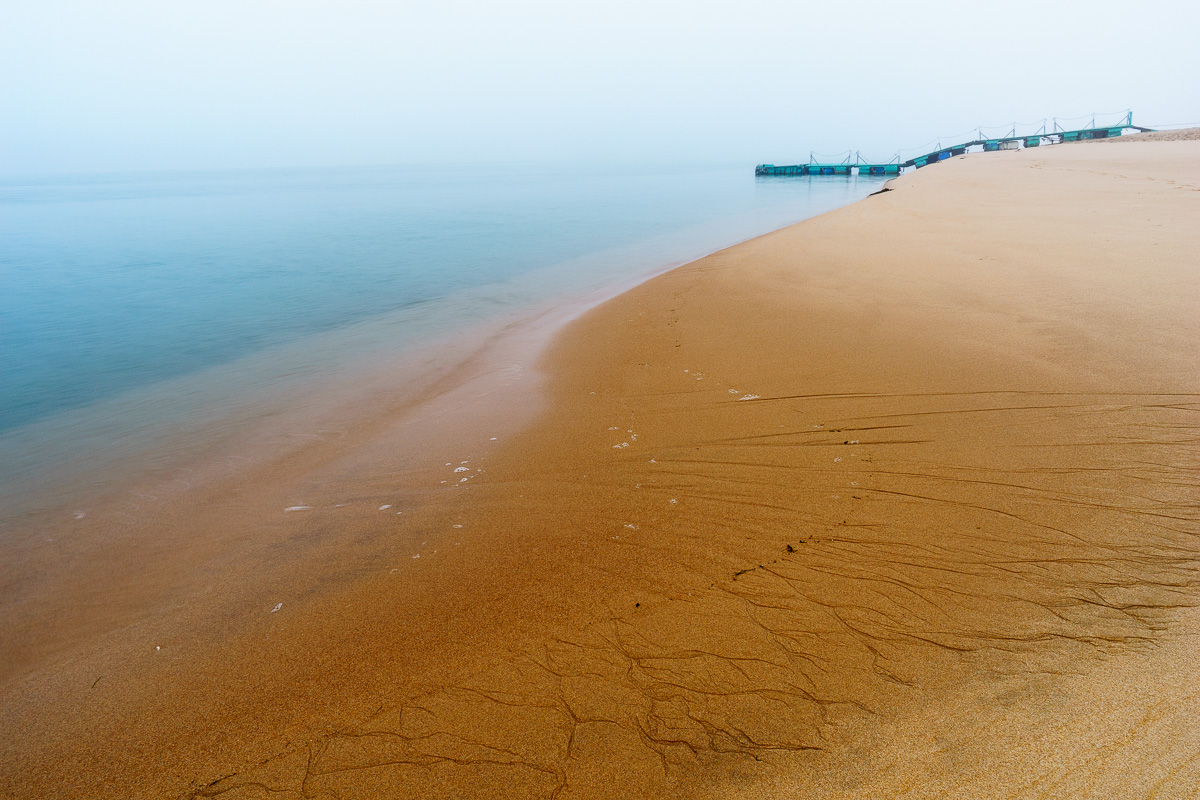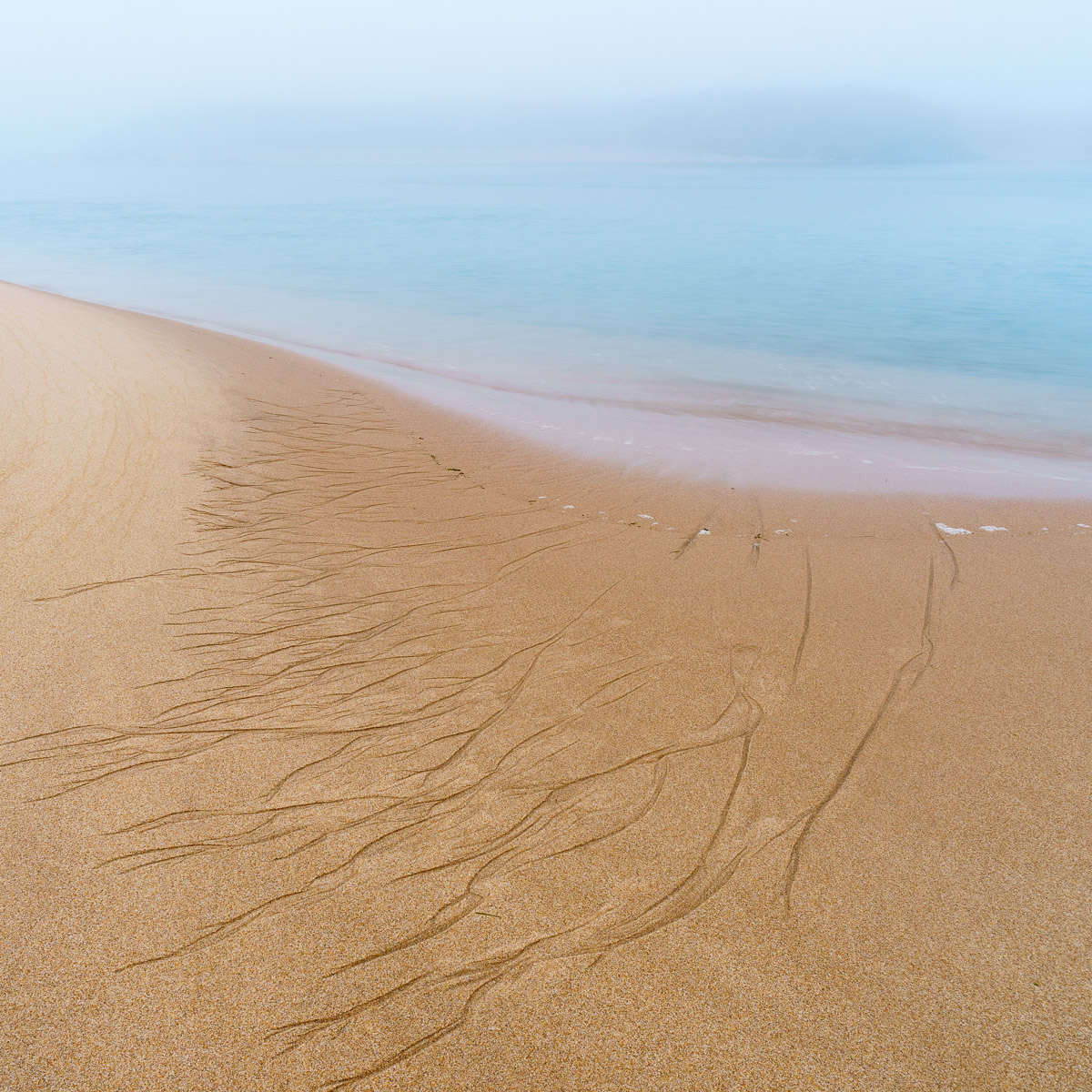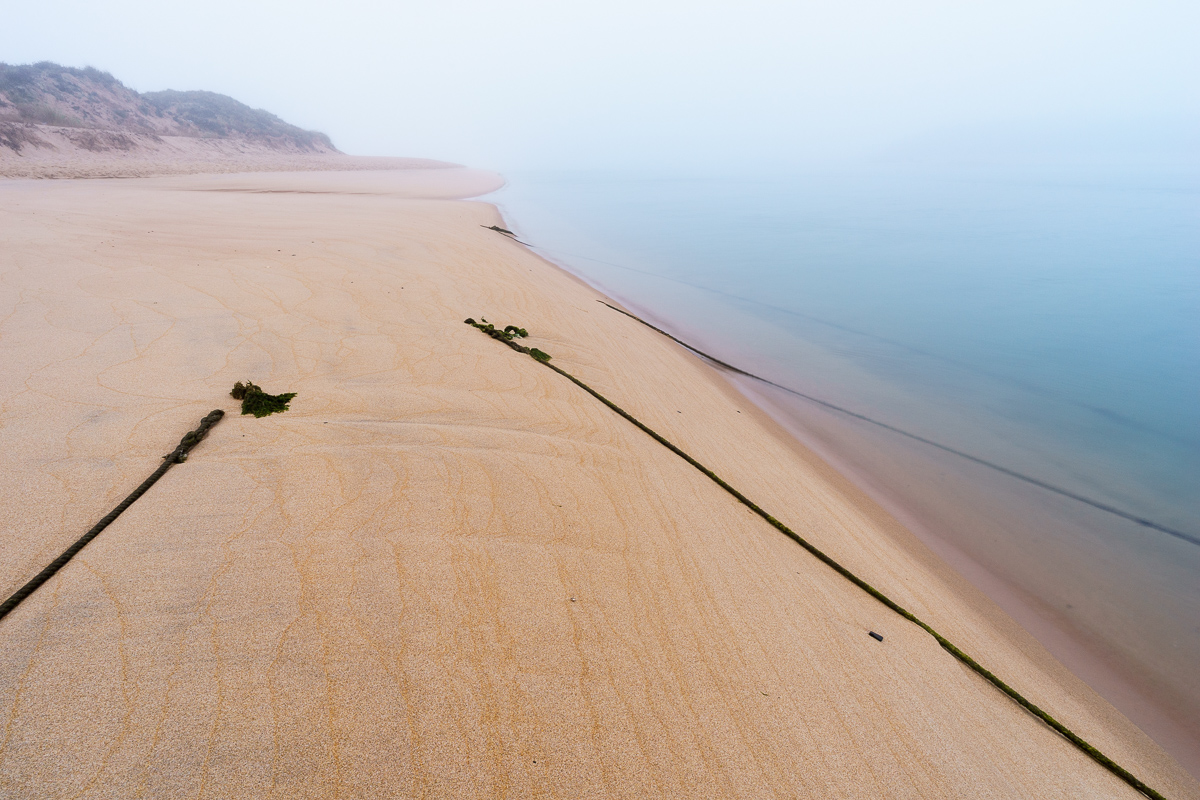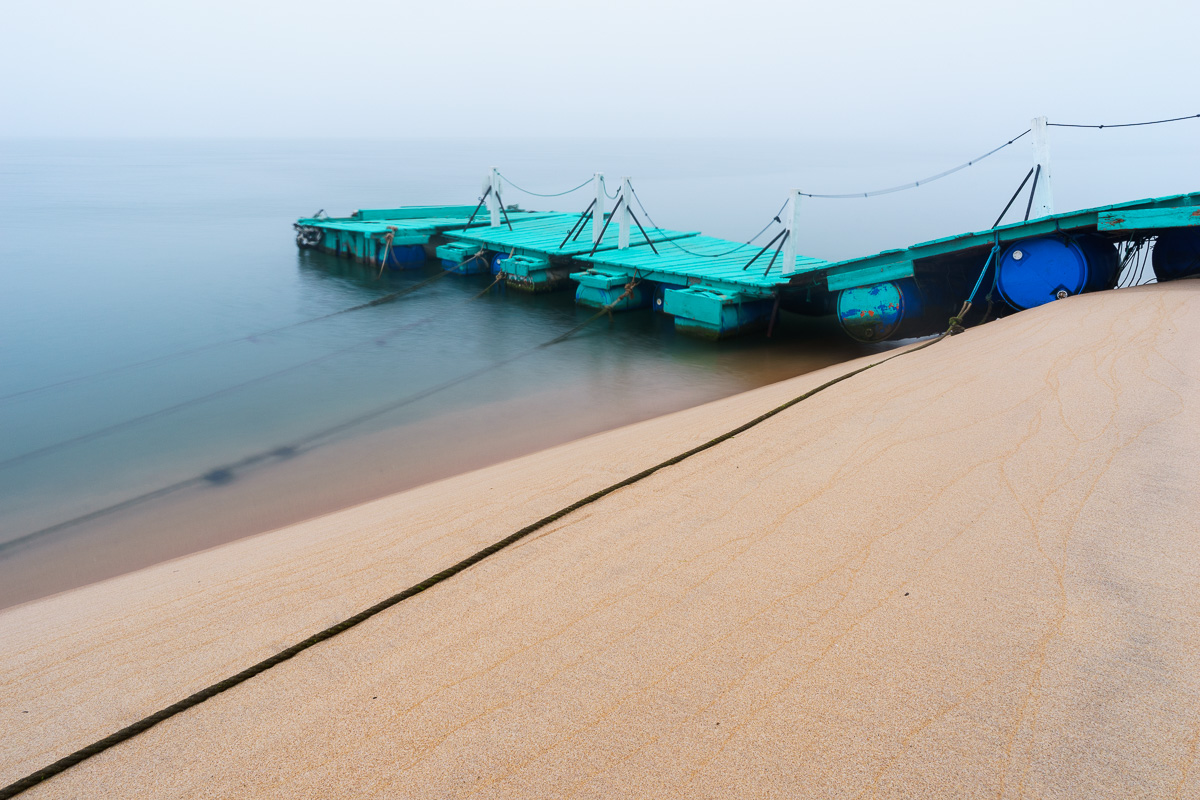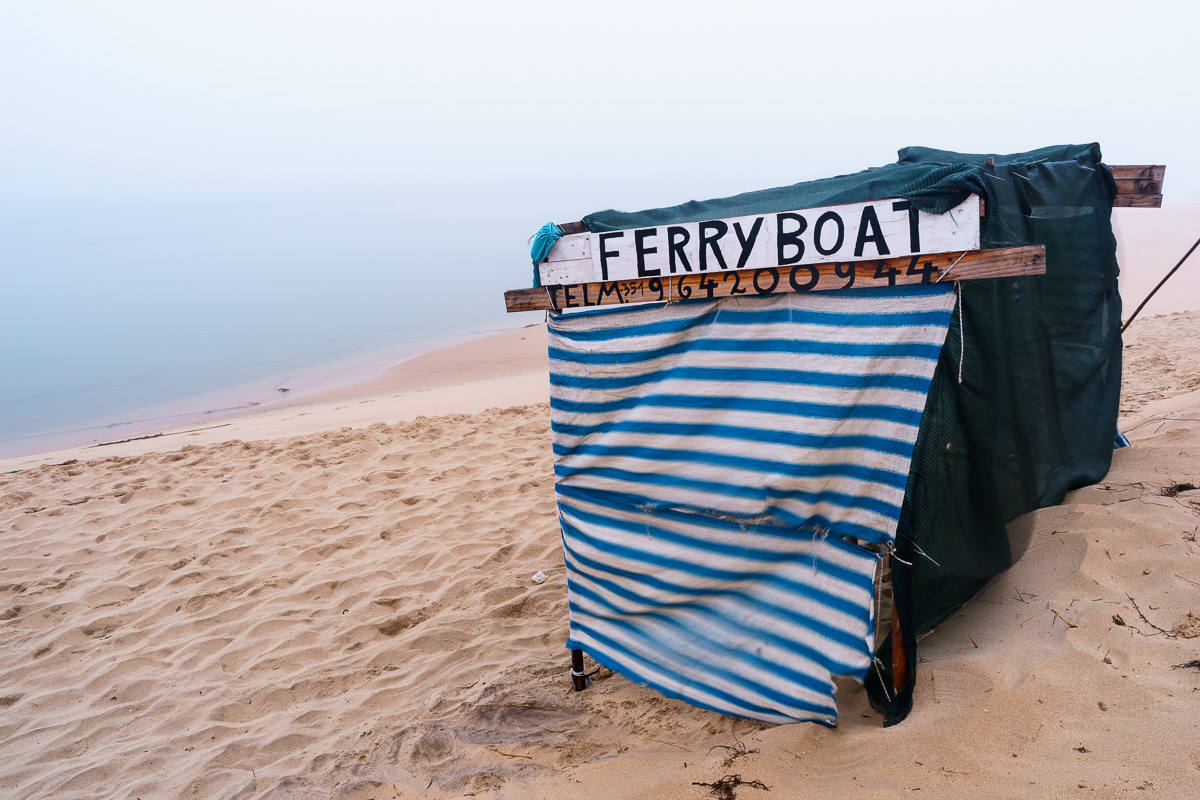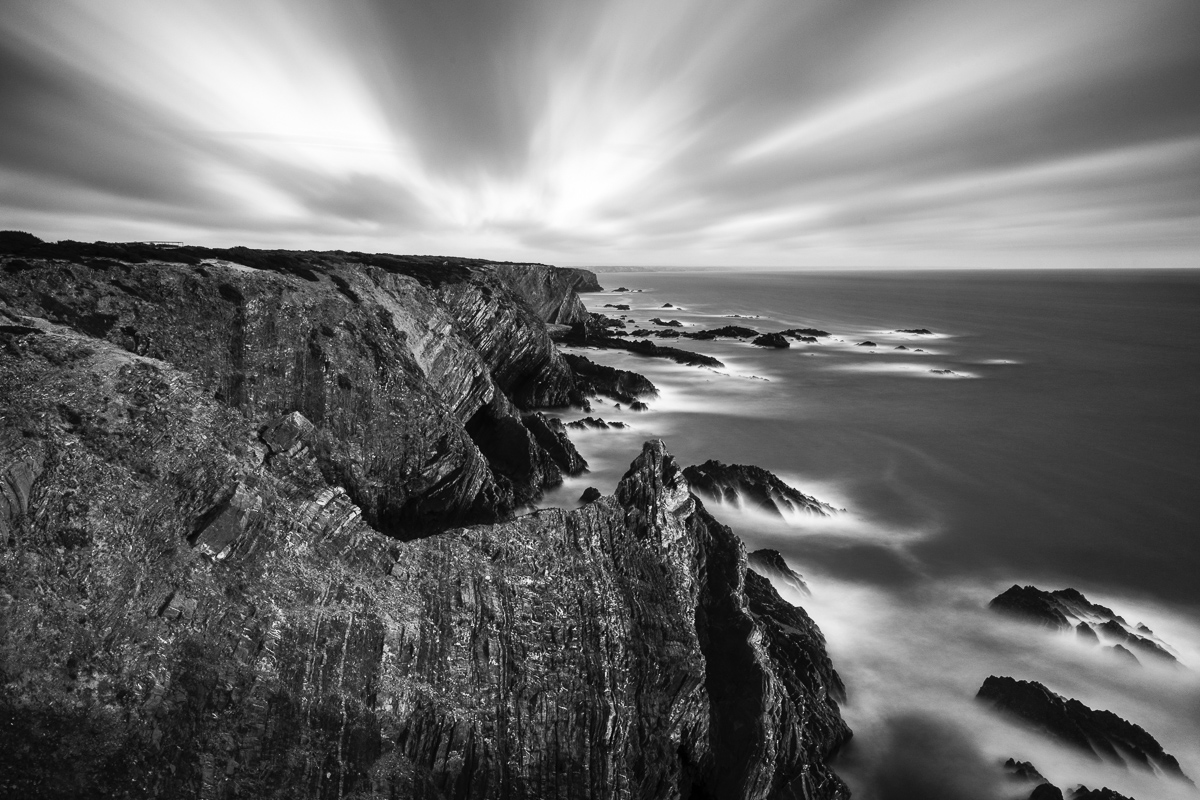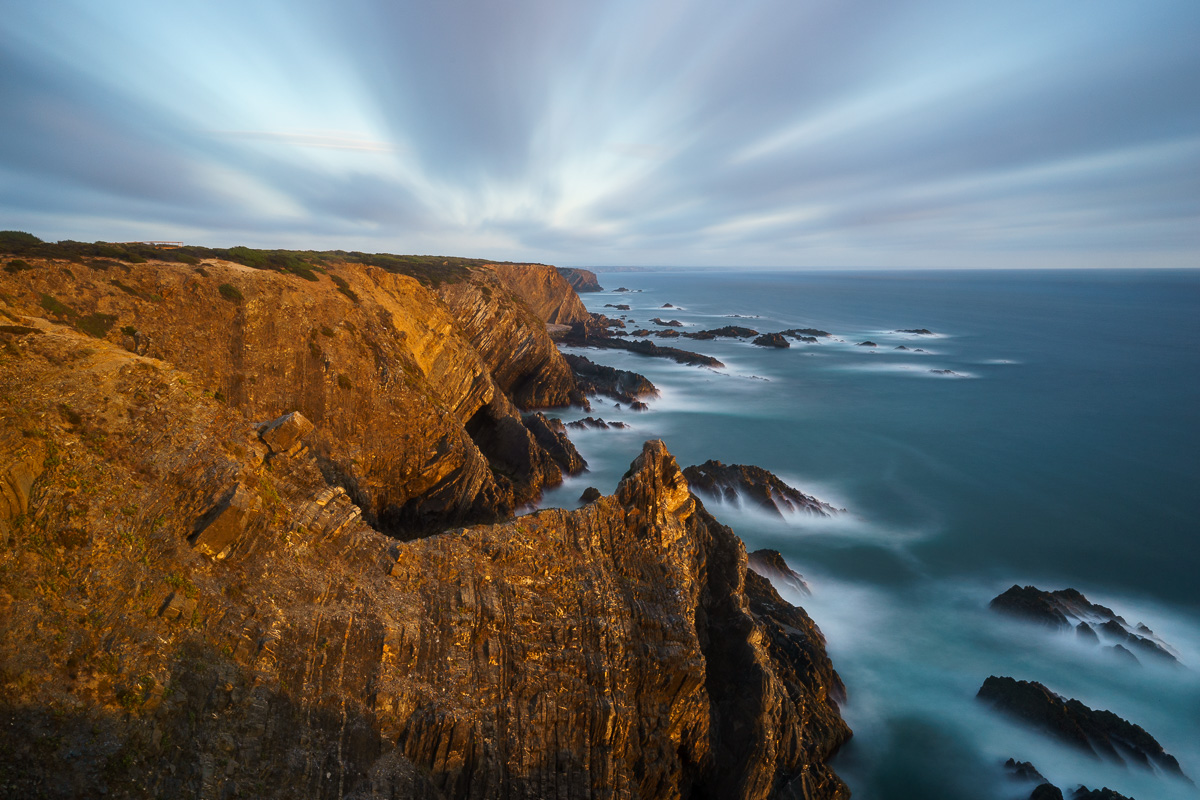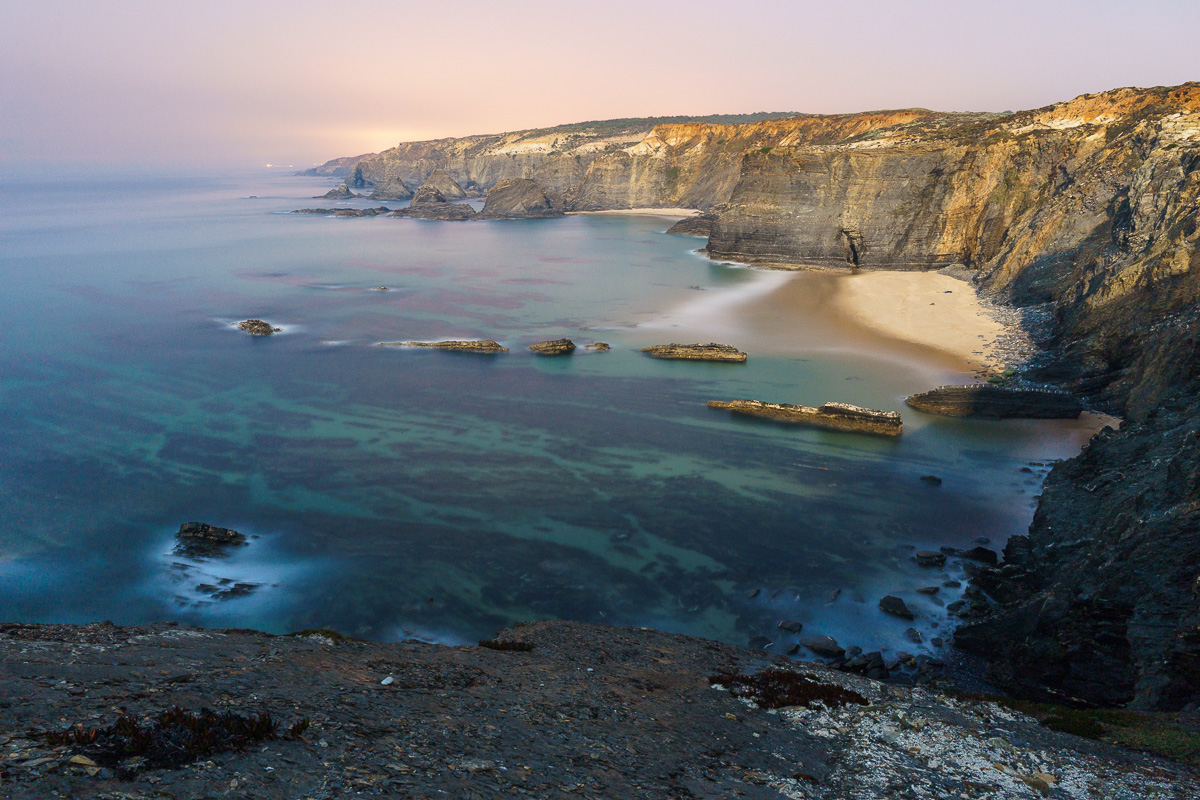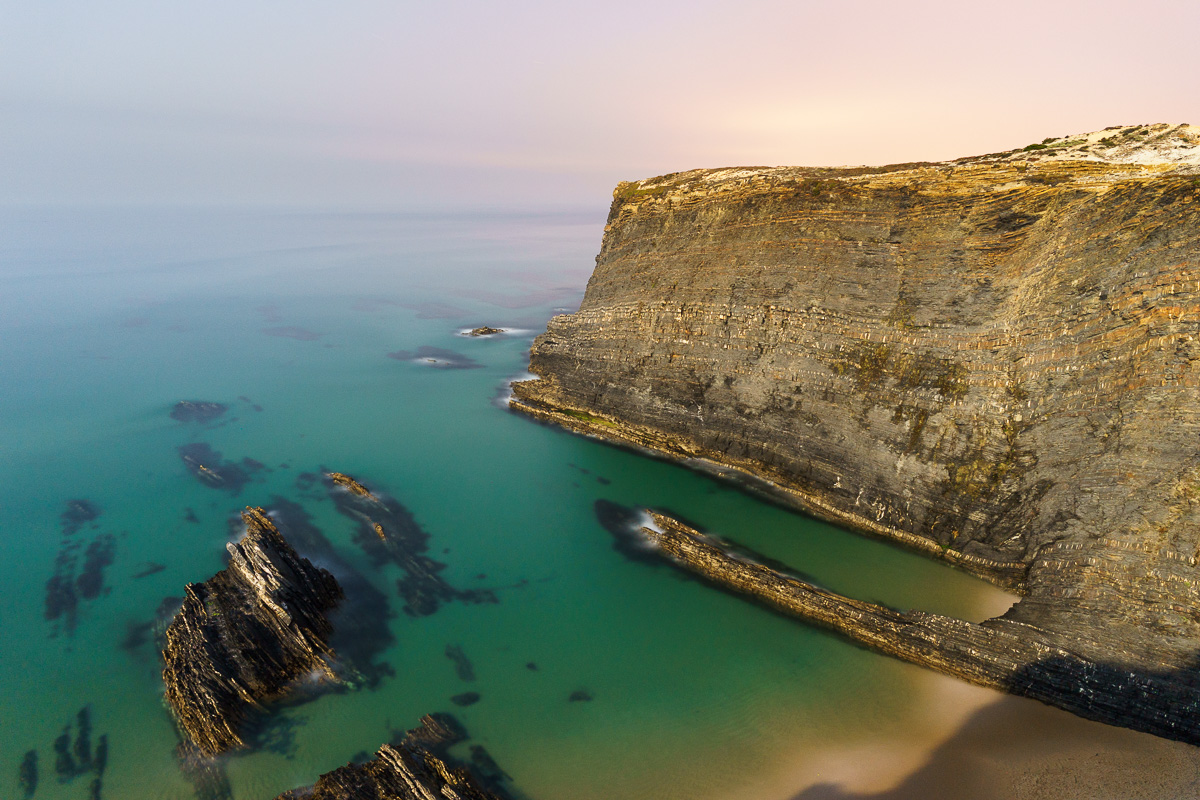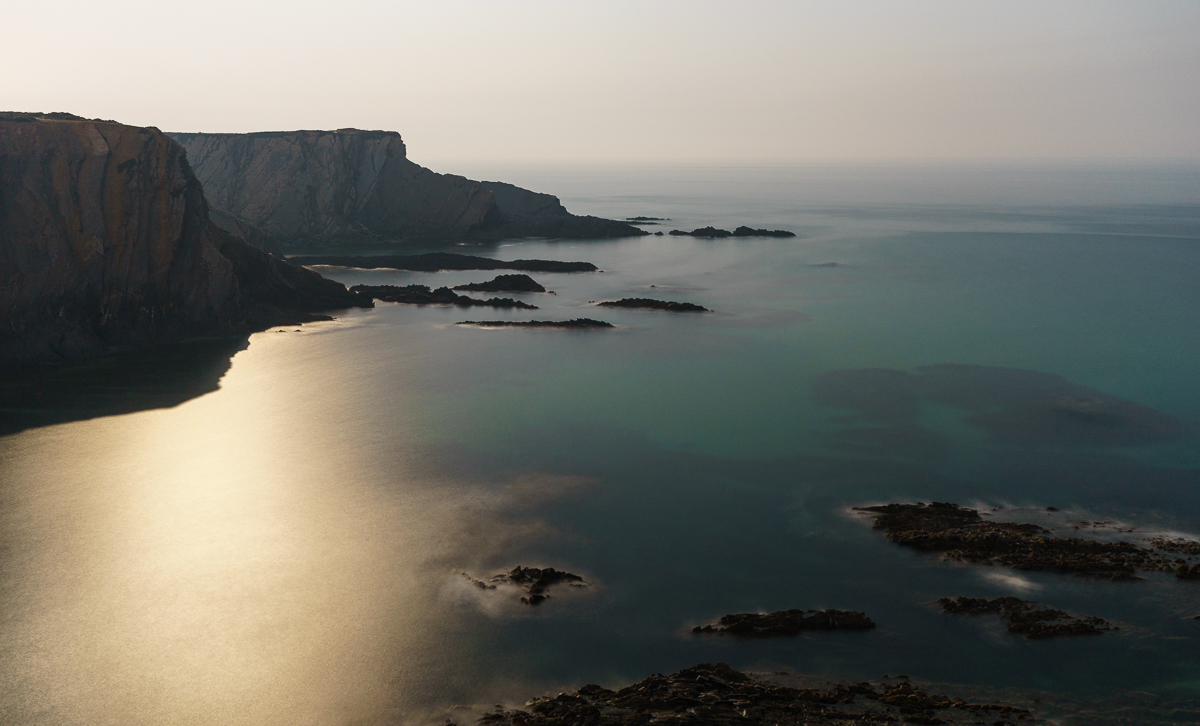Almograve beach, Alentejo coast, around 5.30 am. I woke up early one August morning to photograph this beach at sunrise. After Milfontes (previous posting), this time there was no fog, but the quietness was similar. In a few hours, the beach would be bustling with people, but for now, I had it all for myself. Well, apart from the seagulls and a couple of fishermen trying their luck during the low tide.
In recent years, this beach has seen a significant increase in sand in the intertidal zone, which has covered numerous rocks. This has completely changed its profile, and opens new opportunities for photography. In a way, I wanted to document this new character of a beach that I have known for 40 years.
I started by taking photos of the full Moon setting over the sea, with the bonus of some wispy clouds providing added interest to the scene. I tried several exposure times, in the end I decided to keep the 30 seconds one. I knew I could recover the highlight detail on the Moon, and the resulting cloud movement worked out nicely.
From those initial shots, I went down to explore further, making several compositions featuring the rocks, the vastness of the sand at low tide, and even some star trails. The clouds lit by the early morning sun, with some seagulls flying, also resulted in interesting photos. Indeed, there were no lack of interesting things to photograph.
Once more, it really paid off to wake up early and go out in this session. I came away with some keepers, and experienced this beach in its full potential, when it is deserted. And I arrived home just in time for breakfast with the family.
